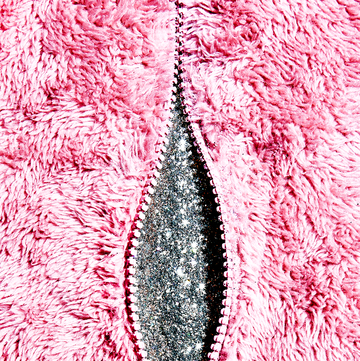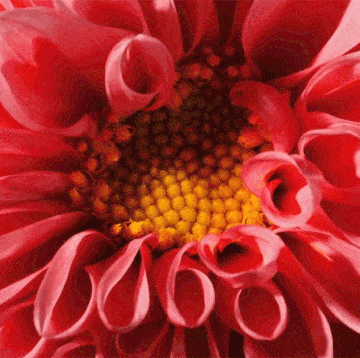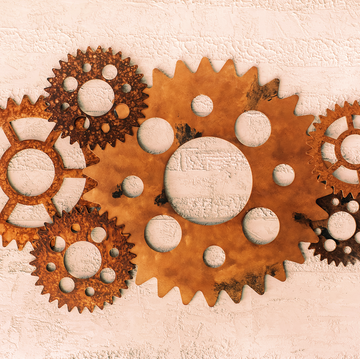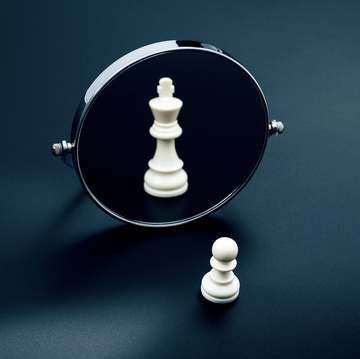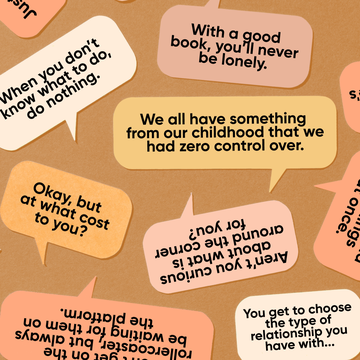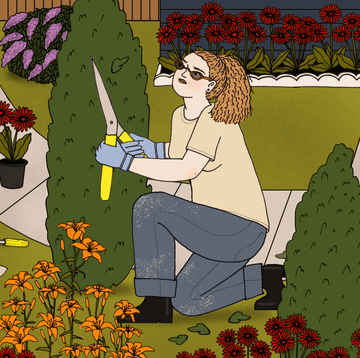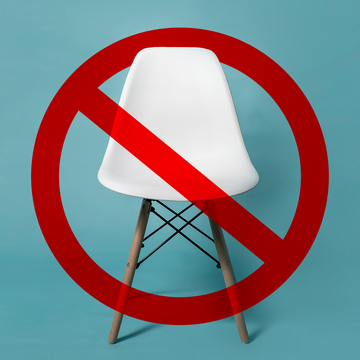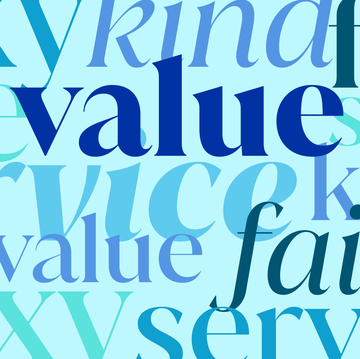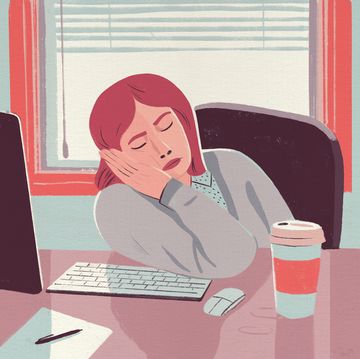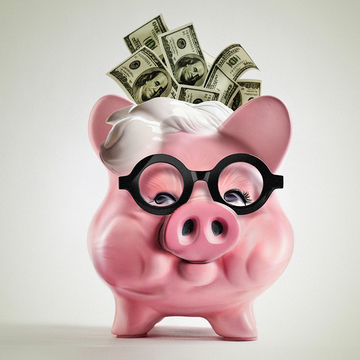There’s a portal that opens as life’s second half comes into focus. For me, it started just before turning 48 and kicked in at 49, the most cuspy year, as demonstrated by its Roman numeral, XLIX—50 minus 10, and 10 minus 1. It’s a potent edge. I know this because back in my 30s, I experienced a full flame-out—leaving my first marriage, quitting my job as a magazine editor in Paris, and, with only my overstuffed backpack as ballast, dropping into the meditation scene in India, following the spiritualized expat pack from Tiruvannamalai to Varanasi and Bodh Gaya to Dharamshala for a year.
This wasn’t that—not a high-drama midlife crisis fueled by volatility. This later call beckoned gently toward the unknown and a future that seemed enticing, not existentially fraught. Instead of wondering what I should do, a question that haunted me in my 30s, my thoughts danced around what I could do. I could keep writing. I’d published several books and had been freelancing ever since India. I felt like I could do almost anything. My inner inquiry was bolstered by a sense of confidence I’d known only fleetingly in the past.
In reality, however, I had very few clues. The only thing I knew—and this was a whisper of an inkling—was that I was also curious about what would happen if I got into really good shape. What it would be like to be nimble and buoyant? If I moved differently, if my cells were rearranged, would I think differently, too? So that’s where I began in 2018. I nudged the furniture out of the way, unrolled my yoga mat and joined Taryn Toomey’s high-octane online HIIT workout The Class for an impossible series of soaring jumping jacks. My breath was jagged. My heart pounded plaintively. My cheeks burned, and I kept on going, even when my arms went slack. Muscles aflame, I found a tangible intensity reflecting all the big movements in my psyche, and I burst into tears. I didn’t give up, however. My curiosity held me.
More From Oprah Daily

I logged in day after day, and, over time, my body did take on a new shape, allowing a fresh energy to ripple through. A fleet of further what-ifs followed. What if I cleaned up my diet and cut sugar? Would fascia rolling change me? I bought an Oura ring to track my sleep and experimented with everything from microdosing psilocybin to bioidentical HRT to cold plunging in the wintery Atlantic to hyperbaric oxygen therapy. It wasn’t strategic career planning, but something was happening.
In the meantime, I kept up my pursuits as a writer, though I was much more excited by my hobbies than my assignments. Then, after more than a year of tinkering, I did what would have once been unthinkable. I scheduled a call with an editor who had commissioned me to write a stylish nonfiction book and told her I couldn’t complete the contract. I could, but I wouldn’t. My heart just wasn’t in it. As I wrote a personal check to Penguin Random House, returning my advance, I felt surprisingly serene. Truly in the unknown now, free from this constraint, and with enough money saved to keep our finances rolling, a radical new idea started to form…would I ever merge all my interests into one and become a transformational coach? Out of all my homegrown experimentation, something novel had emerged.
In some respects, my pivot was lightning fast. I took a year to train as a wellness coach, packing in classes in somatic therapies, working with several coaches of my own, and deepening my newfound knowledge of physiological complexity. But in other ways, my approach to helping clients (mostly visual artists, fashion people, and writers of every kind) engage more deeply with their creative pursuits was decades in the making. I rely on my journalist’s acute curiosity and interviewing skills, my writer’s understanding of the creative process, my extensive meditation and mindfulness experience, and even my capacities as a parent. Together we take on the big stuff—the second-act pivot, a change of artistic medium, transcending writer’s block, or the tender completion of an intense memoir.
We start where I began my pivot, with support to regulate the nervous system, since thoughts of change alone can kick up adrenaline, shifting you into fight-or-flight mode. In that state, your creativity is literally very limited—your choices are narrowed by the neuromodulators in your system. Creative people are like athletes—the steadiness of their bodies is linked to the expansive brilliance of their minds. Rest, eating well, and movement all matter. So does calming down. From my perspective, it’s all the same—how you sleep is how you write or paint. So if you are daring yourself to take your own creativity further, here are some avenues I explore with clients almost universally to get started.
1. See beauty everywhere
Creative people do this naturally, but most have forgotten to lean in and amplify all the sensual pleasures that help the body know it’s safe. Consciously savoring things all day long—when something tastes good, while slowly smoothing on body oil after a shower—makes a difference. I had a client who took photos of the trees in her neighborhood, just because they were gorgeous, though, as an artist, she would have found this trite before working with me. It liberated her process. Regulating your emotions can be as simple as looking around wherever you are and noticing two or three things you like—a patch of sky, a color. It’s an override for the internal alarm system. Everything is okay.
2. Rebel against deep-grind work habits
Coaching longtime creative professionals requires a respectful acknowledgment of their sensitivity. Physiologically, the body functions optimally when working in uninterrupted blocks of around an hour. If the content of the work is emotionally charged, then restorative breaks—meditation, walks, naps, a bath, listening to music—are all the more essential to allowing new ideas to form in a way that’s sustainable. An incredibly talented TV screenwriter I collaborated with had to exorcise the ways of the writers’ room—the endless sessions, the harsh atmosphere—in order to work more deeply.
3. Honor time and space
Though creativity functions in the etheric realm, I also help clients investigate the bedrock foundations of time and space. What work environment truly suits you? A super-tidy writing desk or a sculpture studio full of inspiring chaos? A memoirist coming out of writer’s block found she preferred dictating her pages while walking through the New Mexico woods rather than facing a blank page in her office. Time, too, requires minute awareness. An actress becoming a playwright forged a new way to structure her creative time, as distinct from a schedule dictated by a director’s call sheet. I once helped a working mom and gallery owner ruthlessly clear time during the winters, when her gallery was closed and she could devote long days to her artistic studio work. It all boils down to articulating what you uniquely want most, which has to matter more than the obstacles entangling you on the physical plane.
4. Be generous about other people’s opinions
One aspect of transformation that feels insurmountable for almost everyone is a nagging fear of what others will think. (Many friends don’t want us ever to change, since brains tend to like things just as they are, predictable and safe.) So here is another place to get precise and ruthless with your boundaries, which, thankfully, is so much easier when cruising toward 50. Simply allow other people to think whatever they want about you. If you’re a naturally giving person, this feels pretty delightful: Let them think what they want! Better yet, don’t tell anyone what you’re working on until it’s solid and solidly yours—savor your own mystery. There’s a reason you don't bring your new love home to your parents after a second date.
5. Let curiosity chart the course
Creativity is always a leap into the void. As I once read, any great literary work should have an ending that feels surprising yet inevitable. This is also true of a late-in-life reenvisioning. If the capacity to stay steady through turbulence is a gift of age, harnessing that tension to reveal something that surprises even you—on the page, on the canvas, in your life trajectory—is beautifully creative. You might even start now, letting your eyes drift to the ceiling (or the sky or the stars) as you say to yourself, I wonder…. There’s no answer yet. Don’t fill in the blank. But if it feels delicious, and if your creative heart is in it, you may already feel a little electric charge run through you—your curiosity-driven dopamine system recruited in service to your new exploration. Savoring that sensation of the adventurous unknown is a beautiful place to begin.

